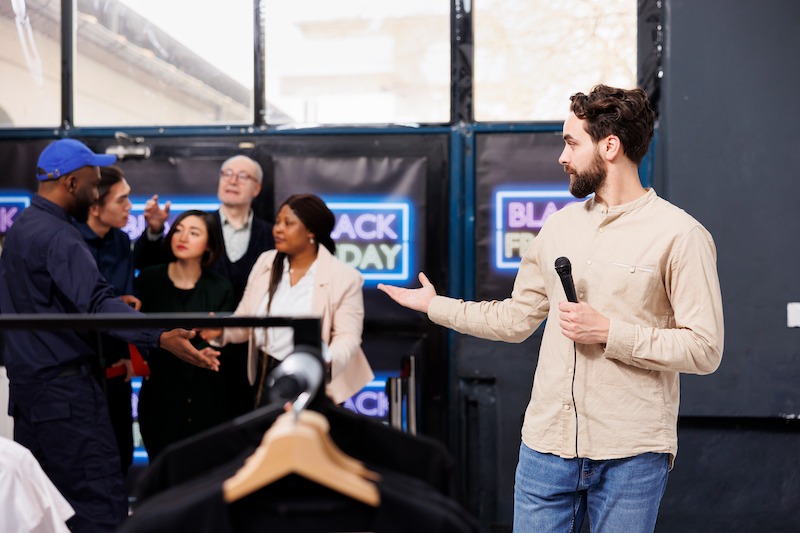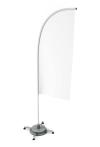We use cookies to make your experience better. To comply with the new e-Privacy directive, we need to ask for your consent to set the cookies. Learn more.
Understanding the Rise of Experiential Retail Marketing

In the current retail world, simply selling a product isn’t enough. Brands are now creating memorable, interactive experiences that go beyond traditional shopping.
That’s where experiential retail marketing comes in. This new approach focuses on engaging customers through unique, immersive experiences that connect with them on a deeper level.
From pop-up stores to in-store events or even high-tech showrooms, the goal is to turn shopping into something fun, exciting, and worth talking about. As customer expectations evolve, more businesses are adopting this strategy to stand out, build loyalty, while also driving sales.
In this blog, we’ll explain what experiential retail marketing is, why it’s gaining popularity, and how it’s changing the way people shop. If you're a retail business owner, this guide will help you understand the power behind experiential retail and why it’s shaping the future of retail marketing.
What Is Experiential Retail Marketing?
Experiential retail marketing is all about creating memorable, engaging shopping experiences for customers. Instead of just displaying products on shelves, brands use events, technology, or interactive setups to connect with shoppers in fun and meaningful ways.
The idea is to make people feel excited and more curious while they shop. This could be done through anything from a virtual reality demo to a themed pop-up store or a live product demonstration.
Basically, businesses turn visits to their stores into experiences, which allows them to build stronger relationships with customers. This also encourages word-of-mouth and helps them stand out from competitors in a crowded retail market.
Why Experiential Retail Is Gaining Momentum
There are many reasons why experiential retail is becoming more common. Firstly, 65-75% of shoppers, especially Millennials and Gen Z, say they’d change their shopping habits if stores offered more immersive experiences.
Plus, hybrid work patterns are bringing people back to high streets; 88% of Brits visited physical retail locations in late 2024, with younger adults making 2.2 visits per month on average.
Meanwhile, retailers are investing in “shopper‑tainment,” like cafe areas, interactive tech, and live events, to make shopping more fun and social. Together, these trends are breathing new life into retail, turning stores into enjoyable places.
Key Elements of an Experiential Retail Strategy

A strong experiential retail strategy should focus on making shopping fun, memorable, and engaging. For this, the key elements would need to include interactive experiences, such as product demos or virtual reality try-ons, that let customers explore in new ways.
Storytelling also plays a big role here; brands can use themed displays or host events to connect emotionally with shoppers. They can also personalise their approach, offering tailored experiences based on customer preferences.
The best way to bring these experiences to life is through a good mix of digital and physical promotional tools. It’s also important to encourage social sharing, so customers spread the word online and offline.
Looking to create a deeper connection between your brand and buyers? Let us help you design custom advertising material to enhance your shop’s appeal. Give us a call today.
Experiential Retail vs. Traditional Retail: What's the Difference?
The main difference between experiential retail and traditional retail is how customers interact with the store. Traditional retail focuses on selling products - items are displayed on shelves, and the goal is a quick, straightforward purchase.
Experiential retail, on the other hand, is all about creating an unforgettable experience. Shoppers might try out products, join in-store events, or check out interactive displays. It’s less about just buying and more about engaging.
While traditional retail is more transactional, experiential retail builds emotional connections and encourages longer visits, often leading to stronger customer loyalty. Put plainly, it turns shopping into something exciting and enjoyable.
How Experiential Retail Drives Customer Engagement and Loyalty
Experiential retail boosts customer engagement by making shopping more meaningful. When people interact with products and attend events, or even explore unique in-store features, they feel more connected to the brand.
These experiences are fun and memorable, and often shared on social media or verbally, helping the brand reach even more people. Over time, this emotional connection builds trust and loyalty.
Customers are more likely to return to a store where they had a positive, engaging experience. Instead of just buying something and leaving, they become part of a brand’s story, which keeps them coming back and encourages them to recommend it to others.
Challenges and Considerations in Implementing Experiential Retail
While experiential retail can be powerful, it also comes with challenges. One of the biggest is cost; creating immersive experiences often requires more money, time, and planning than traditional setups.
Space limitations can also be an issue, especially for smaller stores. It’s important to balance creativity with practicality so the experience works well for both staff and shoppers. Plus, businesses need to ensure their ideas match the brand and actually appeal to their target audience.
Lastly, measuring success isn’t always easy. Unlike sales numbers, it’s harder to track emotional impact, so clear goals and feedback are essential for improvement.
To Enhance Your Experiential Retail Strategy, Call House of Flags
Now you know what experiential retail marketing is and how you can use it to improve your business’ promotional efforts. Do you need help creating customised advertising tools for your shop? We’ve got you covered.
At House of Flags, we have decades of experience in manufacturing and supplying a wide variety of effective promotional products. From banners, display stands and signage to branded flags and more, we’ve got it all!
With our expertise and high-quality products, you can rest assured that your brand will make an impact on your customers.
Explore our incredible products and get in touch with us to learn more about our services.











